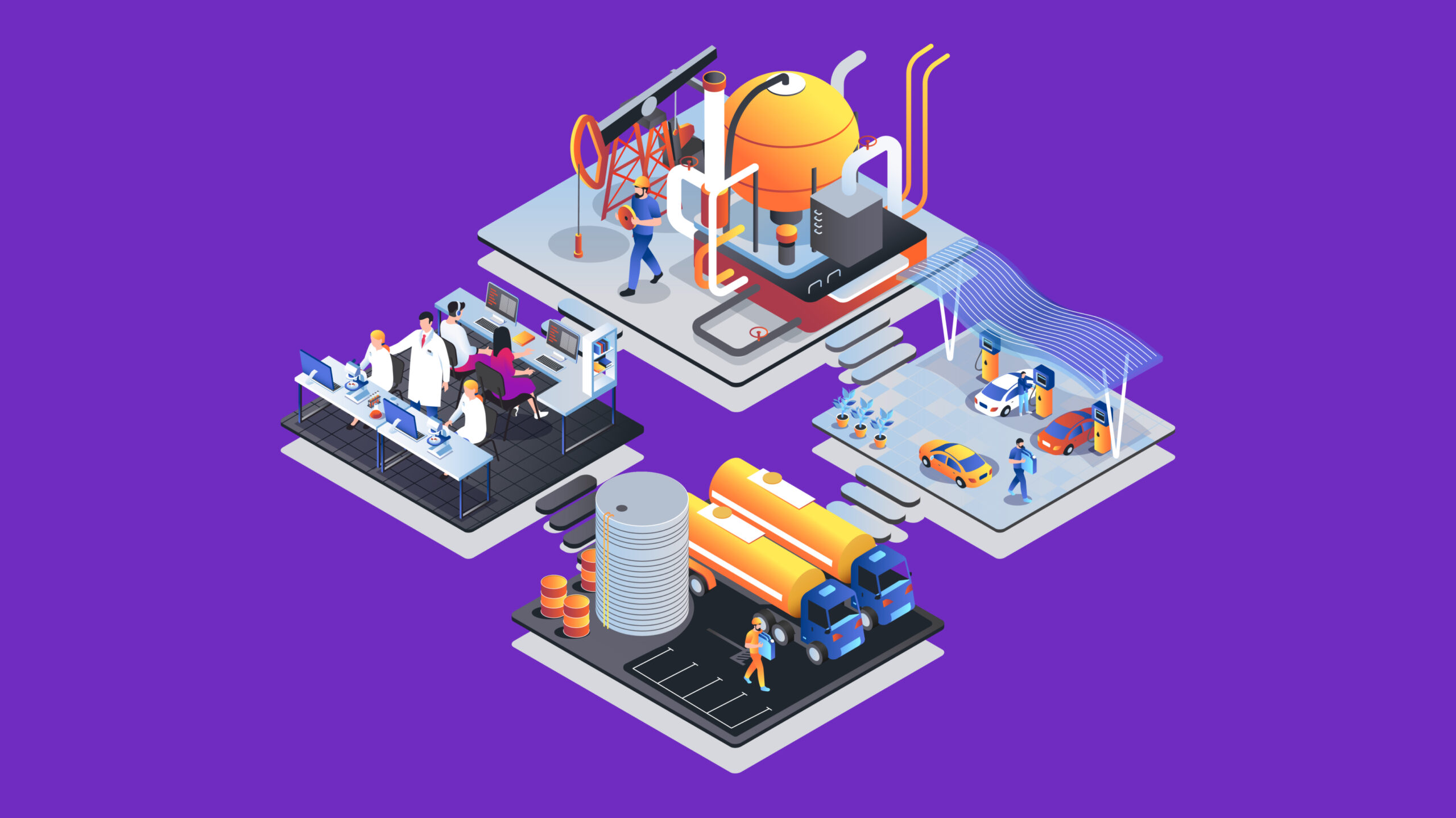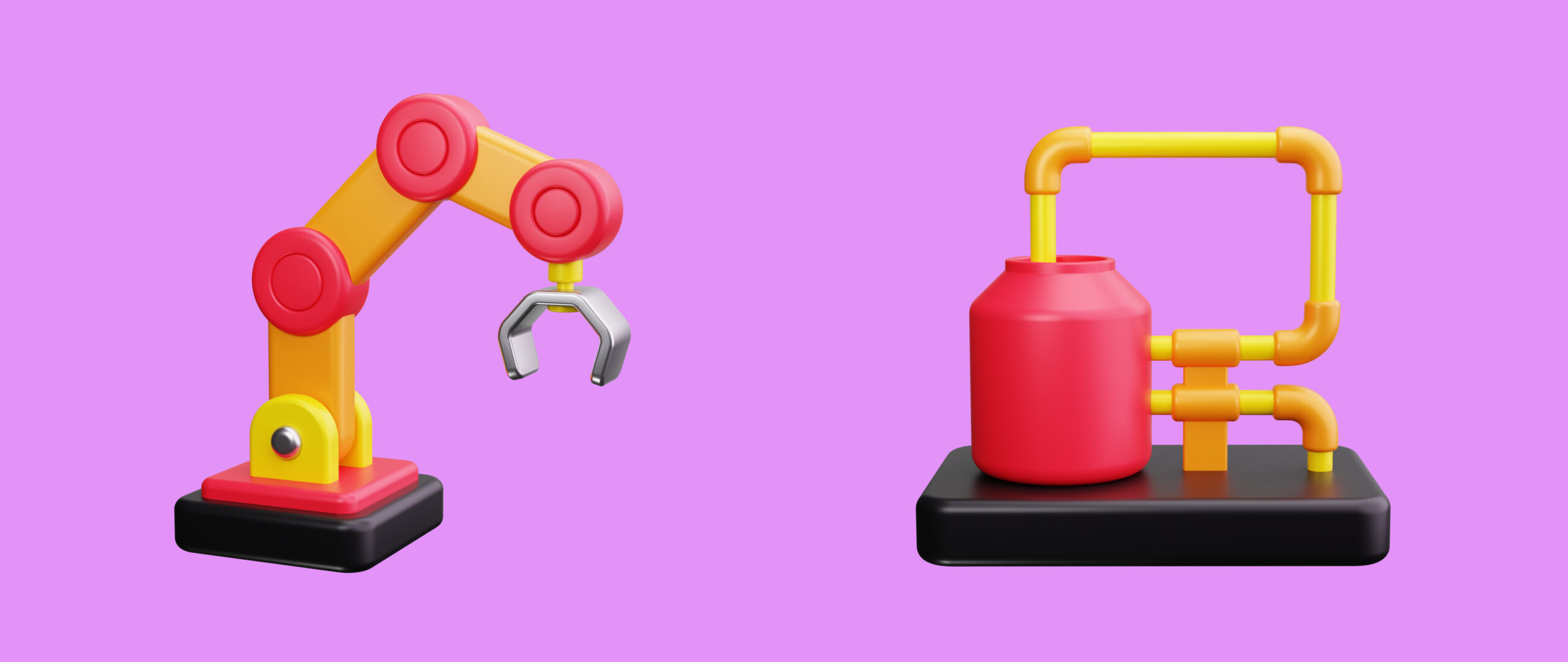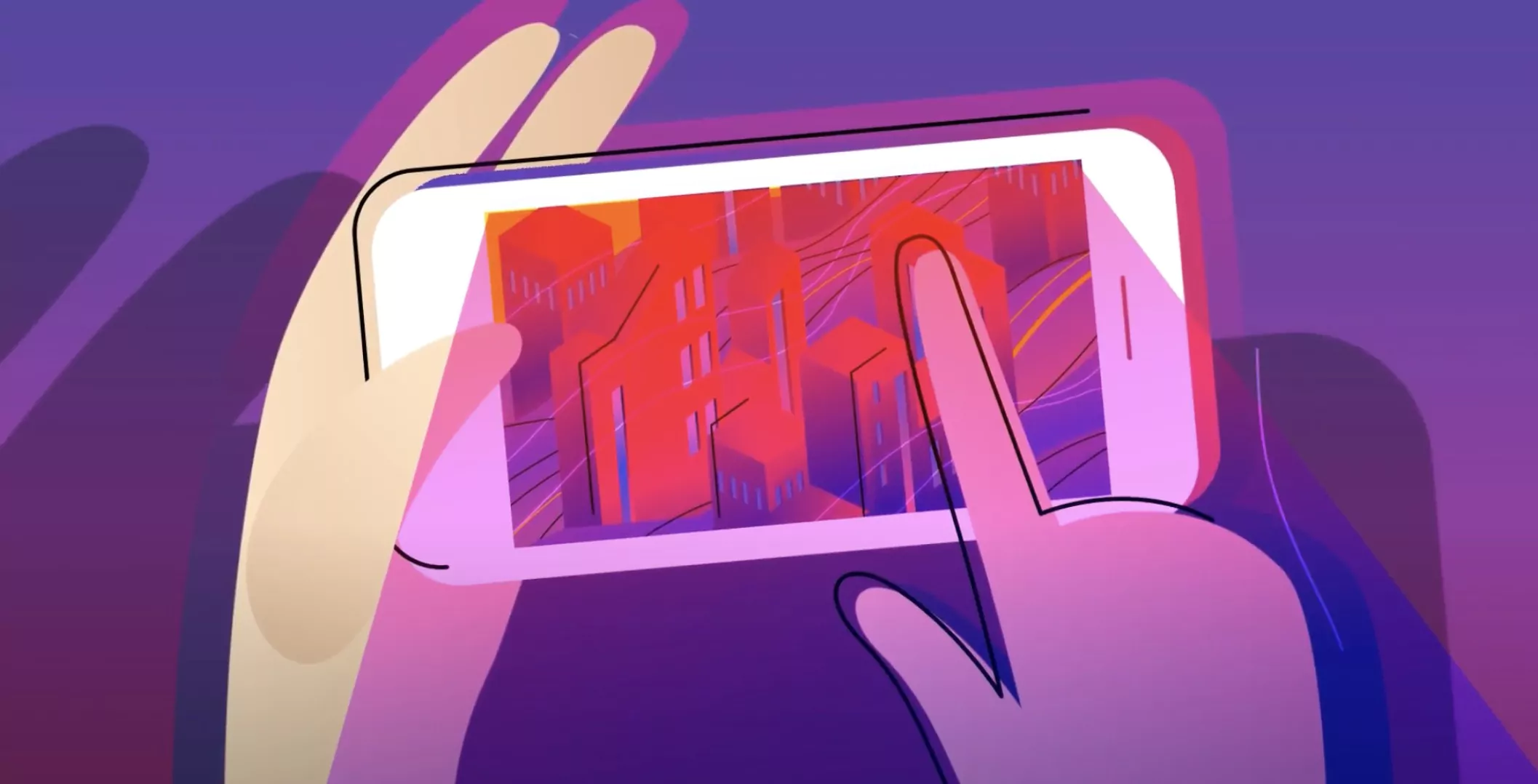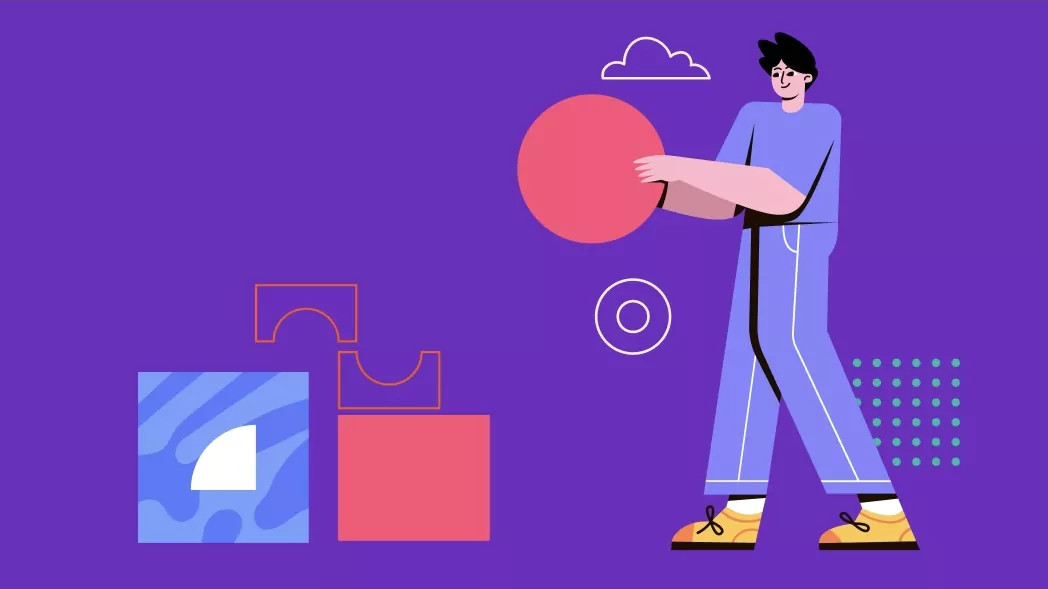Are you facing the challenge of explaining highly complex processes in the metal industry in a way that even non-expert customers and new employees can immediately understand? This is where 3D animations come into play. With realistic 3D visualizations, you can showcase products, machines, systems, or entire processes in motion — clearly, interactively, and easily understandable.
In the following article, you will learn what 3D animation videos are and why they are particularly beneficial for your industry.
What Are 3D Animation Videos?
3D animation videos are digital content created in a three-dimensional environment. These animations give the impression of existing in a real space, even though they are displayed on a flat surface. Unlike traditional two-dimensional representations, 3D animations offer a more realistic and engaging visualization, allowing complex processes and objects to be detailed and clearly illustrated.
Especially in industries such as mechanical engineering or the automotive sector, these 3D representations provide a significant informational advantage. Instead of static drawings or photos, you can see how individual processes or devices “come to life” in real time. This increases engagement among customers and employees alike, laying the foundation for long-term success in technical sales.
Definition and Functionality of 3D Animations
3D animation videos are created using advanced 3D techniques, where a digital model of your products or industrial facilities is developed. Unlike two-dimensional representations, 3D makes shapes, sizes, and movements feel much more tangible. The process involves:
- Modeling the object (e.g., a machine) in a virtual environment.
- Texturing surfaces, colors, and materials to achieve a realistic appearance.
- Animating the model to demonstrate processes or functionalities.
These steps enable a highly detailed visualization of even the most complex machinery processes, allowing you to present your workflows with precision and enhance the understanding of technical concepts.
Advantages of 3D Animations Compared to Traditional Methods
3D animations offer significant advantages over simple sketches or static photos:
- Depth and Realism: Show every detail from different perspectives, even for complex devices or cutting tools.
- High Information Density: Even intricate processes or technical 3D workflows become clear and easy to understand in a short time.
- Long-Term Usability: Once created, animations can be easily adapted to new requirements and reused for future innovations.
Whether used as a marketing tool, for training, or internal communication, 3D animations enhance efficiency, reduce misunderstandings, and provide a compelling presentation — especially as technical complexity increases.

Why 3D Animation Videos Are Essential for the Metal Industry
3D animation videos play a crucial role in the metal industry. They help reduce misunderstandings and errors by making complex machines and processes easier to understand. Interactive 3D models allow customers to engage with products more effectively, strengthening trust and improving purchasing decisions.
When engineers invest in highly specialized equipment, they need a precise understanding of how individual components fit together. A compelling industrial animation enables them to virtually track every screw and movement, providing a clear and detailed insight into the product.
The Importance of Clarity in Technical Processes
In the metal industry, you often need to explain complex concepts so that customers or employees fully understand how your machines and systems work. Animated 3D visualizations significantly enhance comprehension because viewers can:
- Track individual components or movements more precisely
- Grasp the functionality of your equipment more intuitively
- Quickly understand why certain safety measures are necessary
This reduces the need for lengthy explanations and enhances your company’s credibility. For example, if you want to demonstrate a crane’s pick-and-carry capability, a short 3D animation can provide far more clarity than pages of text descriptions.
Visualizing Complex Processes
Especially in industries that manufacture highly specialized products, it is crucial to clearly illustrate workflows. 3D animations break down each step, showing how different components interact. For example, using an all-in-one sorting solution, you can demonstrate how parts are detected, sorted, and transported. The result? Fewer customer inquiries and faster decision-making.
This approach is also useful in construction projects involving metal components. Instead of complex blueprints, architects, site managers, and clients can view an animated 3D representation of the planned structure, making intricate details easier to understand.
Increasing Efficiency and Understanding for Professionals
3D videos make even the most intricate industrial and mechanical processes easy to grasp, improving workflows and boosting productivity. Here are three key factors that contribute to this effect:
- Better Onboarding: New employees quickly understand production essentials through visual explanations.
- Reduced Error Rate: 3D animations highlight critical steps, preventing mistakes and incorrect handling.
- Higher Motivation: When knowledge is presented engagingly, employees are more eager to learn and feel a stronger connection to the company.
Training and Professional Development Through Animation
Technical 3D animations are ideal for training and professional development as they simulate real-world scenarios without the need to block expensive equipment. This saves time, reduces costs, and minimizes risks. Whether demonstrating the setup of a new machine tool or the maintenance of industrial equipment, 3D animation videos provide clarity. Additionally, existing animations can be easily reused for new projects or adapted for different purposes.
Applications of 3D Animation Videos in the Metal Industry
3D animations have become an essential tool in the metal industry. Whether for planning new production lines or marketing technical solutions, they offer a realistic way to present complex processes and enhance understanding. With modern software, you can quickly simulate different scenarios — something that would be nearly impossible with traditional 2D representations.
Visualization of the Production Process
If your production process consists of multiple steps, it can be challenging to convey how everything fits together. With 3D animations, you can clearly illustrate each phase — from material preparation to the finished workpiece. This reduces inquiries and quickly communicates to potential customers the quality and precision of your manufacturing process.
Demonstration of Machines and Tools
The metal industry frequently relies on specialized machines and tools, whose functionality is not always self-explanatory. Animated representations provide immediate insight into how components interact and the necessary steps for processing a part. This also highlights the advantages of your machine over competing products, increasing customer trust and making it easier to integrate new technologies into existing workflows.
Safety and Maintenance Instructions
Precision and safety are crucial in the metal industry. 3D animations allow you to visually present complex maintenance procedures and safety regulations, improving employee understanding and reducing the risk of operational errors. Additionally, maintenance schedules or safety checklists can be updated quickly without needing new photos or diagrams.
Benefits of 3D Animations for Companies in the Metal Industry
The metal industry is defined by strict standards, complex machinery, and high investment costs. 3D animations help overcome these challenges by making presentations more customer-friendly, reducing errors, and optimizing internal processes. This not only saves time but also translates into significant cost savings.
Reduction of Misunderstandings and Errors
Misunderstandings often arise when technical concepts are explained superficially. With animated visuals, you gain a precise understanding of each component’s role and how different processes interact. This leads to fewer mistakes in practice — an essential advantage if you want to avoid costly downtime or defective products.
Improved Communication Between Teams and Departments
In large companies, multiple departments often work on the same project simultaneously. To ensure that everyone is on the same page, 3D animations serve as an ideal tool. Designers, production planners, and sales teams all view the same process — from their respective perspectives. This improves collaboration and creates a shared understanding without the need for endless meetings.
Cost and Time Savings in Training
When onboarding new employees or conducting training for existing staff, animated videos can save you a lot of time. Instead of explaining theoretical concepts in a tedious way, you can showcase processes directly on a virtual model. This speeds up learning and helps prevent unnecessary mistakes. Additionally, you eliminate the need for constantly running demo machines, saving resources and production space.
Trends and Developments in the Use of 3D Animations in the Metal Industry
The metal industry is constantly evolving, and modern 3D animations are playing a key role in this transformation. More and more companies are using them to simulate individual production steps or entire factory layouts interactively. This allows you to test in the planning phase how machines can be arranged most efficiently or whether a new facility operates optimally.
- Growing Demand: Whether for marketing, training, or product development, 3D visualizations are more in demand than ever.
- Use at Trade Shows and Events: Interactive booths or virtual reality stations leave a lasting impression on potential customers.
- Integration with Real-Time Data: In modern Industry 4.0 environments, simulations can access live sensor data to display continuously updated processes.
Advances in 3D Technology and Software
The continuous development of hardware and software ensures that 3D animations are becoming more detailed, faster, and more cost-effective. New rendering engines enable realistic lighting effects in real-time, while AI-powered tools automate repetitive tasks.
- Improved Performance: Powerful graphics cards and modern processors accelerate the rendering process.
- Intuitive Usability: Even complex software packages are becoming more user-friendly, making it easier for you and your team to get started.
- Cloud Services: Data can be edited and shared online, simplifying collaboration across multiple locations.
Thanks to these advancements, companies can quickly adjust their 3D visualizations and respond flexibly to new requirements.
The Future of 3D Animations in the Metal Industry
In the future, 3D animations will become even more integrated with other technologies. Just think of Virtual Reality and Augmented Reality: Employees will be able to train on virtual machines or interact with full-scale components without disrupting real production.
- Artificial Intelligence (AI): AI could provide automated suggestions for optimizing workflows or even generate animations independently.
- Digital Twin: Entire factories will be digitally replicated to simulate production processes and identify potential weaknesses early.
- Comprehensive Integration: From sales and quality management to maintenance, 3D animations could soon become a standard tool in every company department.
Businesses that embrace 3D animations today are laying the foundation to remain competitive in an increasingly dynamic industry.
Summary
3D animation videos have the potential to revolutionize the metal industry. They provide a clear and understandable visualization of complex processes and machinery, enhance communication and training, and lead to significant cost and time savings. Advances in 3D technology and software are opening new opportunities for companies to increase efficiency and present their products and services in innovative ways.
The future of 3D animations in the metal industry looks promising. The integration of virtual reality and artificial intelligence will set new standards, fundamentally changing how we understand machines and processes. Take advantage of the opportunities that 3D animation videos offer and stay at the forefront of technological development.
Frequently Asked Questions
How does 3D animation work?
3D animation works by creating and manipulating digital models in a three-dimensional environment to simulate realistic movements. These computer-generated images create the illusion of motion in space.
What are 3D animation videos?
3D animation videos are digital content created in a three-dimensional environment, offering a more realistic and engaging representation. They are commonly used in advertising, film, and education.
What advantages do 3D animations offer over traditional methods?
3D animations provide greater visual appeal and more realistic representations beyond the capabilities of traditional methods. They are also more cost-efficient in the long term and offer better interactivity.
How can 3D animations improve efficiency?
3D animations enhance efficiency by increasing transparency and understanding of machine processes, aiding in troubleshooting, and identifying optimization potential. This leads to improved production outcomes.




